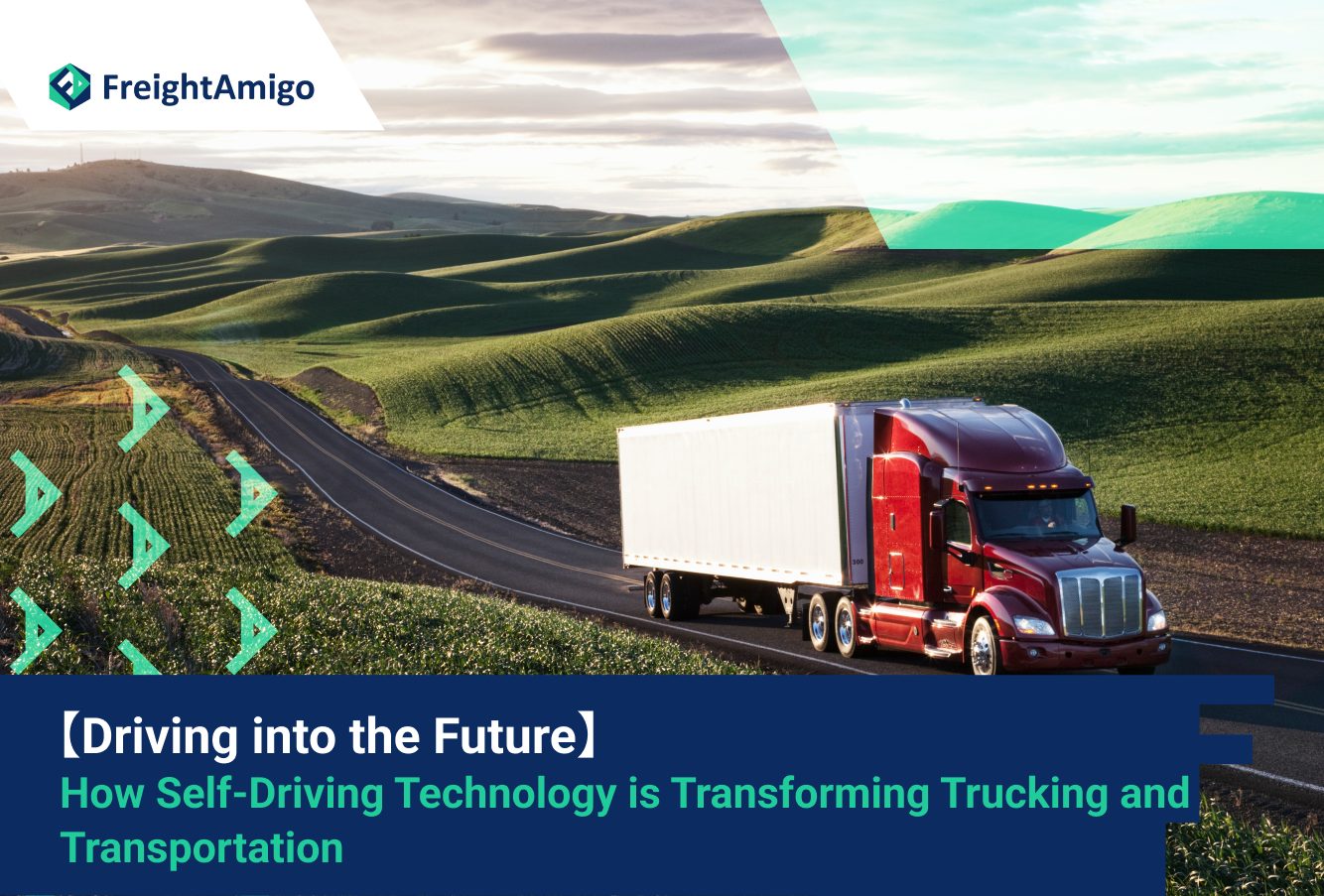Introduction to self-driving technology in trucking and transportation
Self-driving technology has emerged as a groundbreaking innovation in the trucking and transportation industry. With the advancements in artificial intelligence and automation, it is now possible for trucks to navigate highways and roads without the need for human drivers. This revolutionary technology is transforming the way goods are transported, offering numerous benefits and opportunities for the industry.
Author Name: Caspian Ng – Marketing Analyst at FreightAmigo
Want To Compare The Best Express, Air Freight, Sea Freight, Rail Freight & Trucking Rates So As To Have Better Control On Cost?
The impact of self-driving technology on the trucking industry
The introduction of self-driving technology in the trucking industry has the potential to revolutionize the entire supply chain. One of the major impacts is increased efficiency. Self-driving trucks can operate around the clock, minimizing downtime and optimizing delivery schedules. Additionally, with reduced human error, accidents and fatalities can be significantly reduced, making road transportation safer for everyone.
Another significant impact is cost savings. By eliminating the need for human drivers, companies can save on labor costs, which account for a substantial portion of transportation expenses. Self-driving trucks also have the potential to reduce fuel consumption through optimized route planning and driving techniques, leading to lower operational costs.
Benefits of driving automation in transportation
Driving automation in transportation offers a multitude of benefits for both businesses and consumers. Firstly, it improves overall productivity. With self-driving trucks handling long-haul routes, human drivers can focus on more complex tasks, such as navigating urban areas or managing the loading and unloading of goods. This increased productivity translates into faster delivery times and improved customer satisfaction.
Furthermore, self-driving technology enhances safety on the roads. Most road accidents are caused by human error, such as fatigue, distraction, or speeding. By eliminating the human factor, self-driving trucks can significantly reduce the number of accidents, making transportation safer for everyone on the road.
Additionally, driving automation can help mitigate the driver shortage issue faced by the trucking industry. As the demand for goods transportation continues to grow, there is a need for more truck drivers. However, the industry is struggling to attract new talent. Self-driving technology can help bridge this gap, ensuring a more consistent and reliable supply chain.
Challenges and concerns surrounding self-driving technology
While self-driving technology holds immense promise, it also presents challenges and concerns that need to be addressed. One of the major concerns is the potential impact on jobs. With the introduction of self-driving trucks, there is a fear that many truck drivers may become obsolete. However, it is important to note that while some roles may change, the industry will still require human oversight, maintenance, and management.
Another challenge is the need for infrastructure development. Self-driving trucks rely on advanced technology, such as GPS, sensors, and communication systems. To fully leverage the benefits of driving automation, there is a need for improved infrastructure that can support these technologies. This includes the installation of smart highways and the development of robust communication networks.
Current state of self-driving technology in trucking and transportation
The current state of self-driving technology in trucking and transportation is rapidly evolving. Several companies are actively testing and implementing self-driving trucks on highways and in controlled environments. These trucks are equipped with advanced sensors, cameras, and artificial intelligence algorithms that enable them to navigate roads, change lanes, and respond to various traffic situations.
However, it is important to note that self-driving technology is still in its early stages, and there are limitations to its capabilities. While self-driving trucks can handle long stretches of highway driving, they still require human intervention for complex maneuvers, such as navigating through cities or handling unexpected road conditions. As the technology continues to improve, these limitations are expected to be overcome, paving the way for fully autonomous trucks.
The future of self-driving technology in trucking and transportation
The future of self-driving technology in trucking and transportation is promising. As the technology matures, we can expect to see fully autonomous trucks operating on highways and roads, revolutionizing the industry. These trucks will be equipped with advanced AI systems that can analyze and respond to real-time data, making transportation even more efficient and safe.
Additionally, self-driving technology will enable truck platooning, where multiple trucks can travel in close proximity, reducing wind resistance and fuel consumption. This will further optimize the efficiency of goods transportation, leading to cost savings and reduced environmental impact.
Regulations and legal considerations for self-driving trucks
With the rapid development of self-driving technology, it is crucial to establish regulations and legal frameworks to ensure its safe and responsible implementation. Governments and regulatory bodies are actively working on creating guidelines for autonomous vehicles, including self-driving trucks. These regulations will address issues such as safety standards, liability, and data privacy, ensuring that self-driving trucks meet the necessary requirements before they can operate on public roads.
Companies leading the way in self-driving technology for trucking and transportation
Several companies are at the forefront of self-driving technology for trucking and transportation. One notable example is Tesla, which has been developing its Autopilot system for its electric vehicles, including trucks. Other companies like Waymo, Uber, and Embark are also investing heavily in self-driving technology for trucking. These companies are conducting extensive testing and research to improve the capabilities of self-driving trucks and bring them to market.
The role of artificial intelligence in driving automation
Artificial intelligence plays a crucial role in driving automation. The advanced AI algorithms used in self-driving trucks enable them to analyze vast amounts of data, make decisions in real-time, and respond to changing road conditions. These algorithms learn from their experiences and continuously improve their capabilities, making self-driving trucks more efficient and safe over time.
Conclusion: The transformative potential of self-driving technology in trucking and transportation
Self-driving technology is transforming the trucking and transportation industry, offering numerous benefits and opportunities. From increased efficiency and cost savings to improved safety and productivity, driving automation has the potential to revolutionize the way goods are transported. While there are challenges and concerns that need to be addressed, the future of self-driving technology is promising. As the technology continues to evolve and regulations are established, we can expect to see fully autonomous trucks on the roads, ushering in a new era of transportation.
There Are Different Options For Cargo Transportation. If You Want To Choose The Most Convenient And Suitable Solution, It Is Best To Have The Full Support Of Logistics Experts! If You Are Planning To Ship Goods Overseas, Please Go To The FreightAmigo Page For Inquiries.
===
Read More:
【Blockchain Technology】A Game Changer for Transparent and Secure Financial Transactions in Logistics
【Financial Technology】Blockchain Revolutionizing the Logistics Industry with Smart Contracts
【Streamlining Supply Chains】The Power of Blockchain in Logistics
===
If you have any inquiries on logistics/supply chain, feel free to contact FreightAmigo now:
Chat with us online OR
Phone : +852 28121686
WhatsApp: +852 27467829









































